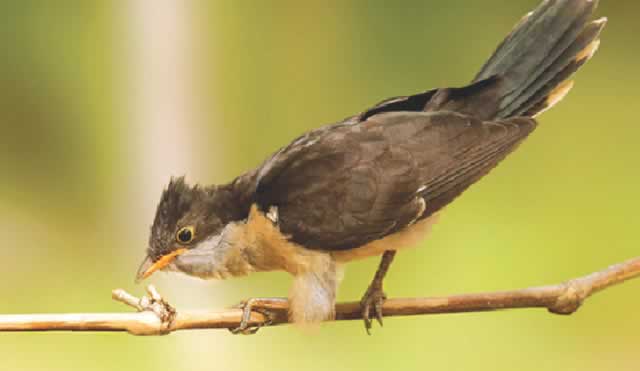
The Sunday News

Know Your Wildlife
Inkanku (Ndebele)
Haya (Shona)
Description
THE Jacobin Cuckoo is a slender, medium-sized bird with two colour morphs:
(a) Clear white front and black back.
(b) Pitch black all around, except for the white wing bar which is more visible in flight.
The head has a crest pointing backward, like a cap worn front side back and a sharp pointed beak. The slender body is probably meant for flying.
Habitat
This bird is found in moist habitats, where there are trees for perching. It is a frequent visitor to suburbs (I have seen it several times in Nkulumane on the outskirts of Bulawayo). During the 1990s Bird Atlassing Project, we could see it even in Miombo Woodlands, Acacia Woodlands and even where there are scattered trees. This species is an Intra-African Migrant, i.e. it migrates within Africa. It arrives in Southern Africa in October, departing to the North in May. The arrival and departure dates are confirmed by the specimens in the Museum, which were collected over many years. Nowadays we no longer shoot them with shotguns, but shoot them using a camera, but road casualties are brought to us by members of the public.
Habits
This species of cuckoo is very noisy, singing loudly in flight or when perched. Mostly this species is solitary. I have seen two or three birds as a group only a few times, confirming that it prefers a solitary lifestyle. This bird does not sit on a branch for a long time and it is very difficult to photograph.
It flies off at the sight of a person approaching it. Sometimes you see two birds chasing one another, presumably to mate.
Breeding
The Jacobin Cuckoo is a brood parasite, i.e. it lays its eggs in other bird’s nests. According to our nest record cards, the host species are the Black Eyed Bulbul (Pycnototus barbatus) and some weaver species. In egg collection you can observe that the eggs of the Jacobin Cuckoo are a very close mimicry of the host species in colour, differing in that the cuckoo’s eggs are slightly larger. The cuckoo ejects the host’s egg and lays her own. She goes on to look for other host species, repeating the process, throughout the breeding season. The parasite’s eggs hatch earlier than the host’s and instinctively the parasite chick ejects any object(s) that touch its body, egg or other chicks out of the nest.
The chick is usually much bigger than its foster parent which may stand on the chick to feed it properly.
The parasite chicks grow very fast and leave the nests sooner than the host species chicks would (maybe to escape detection?).
Diet
According to the stomach contents I retrieved during skinning the Museum specimens, I found a variety of insects, hairy caterpillars and unidentified digested foods.
It is understood that this cuckoo feeds on hairy, scary and poisonous caterpillars that are unpalatable to other bird species.
The wide gap of its mouth suggests that it can also feed on the wing (catch flying insects while flying itself). Feeding on caterpillars and insects helps us on food security because caterpillars and insects wreak havoc on food crops as demonstrated by army worms in maize fields.
Conservation
This species is not endangered because host species are abundant. As long as the availability of host species is there, no conservation measures are necessary.



